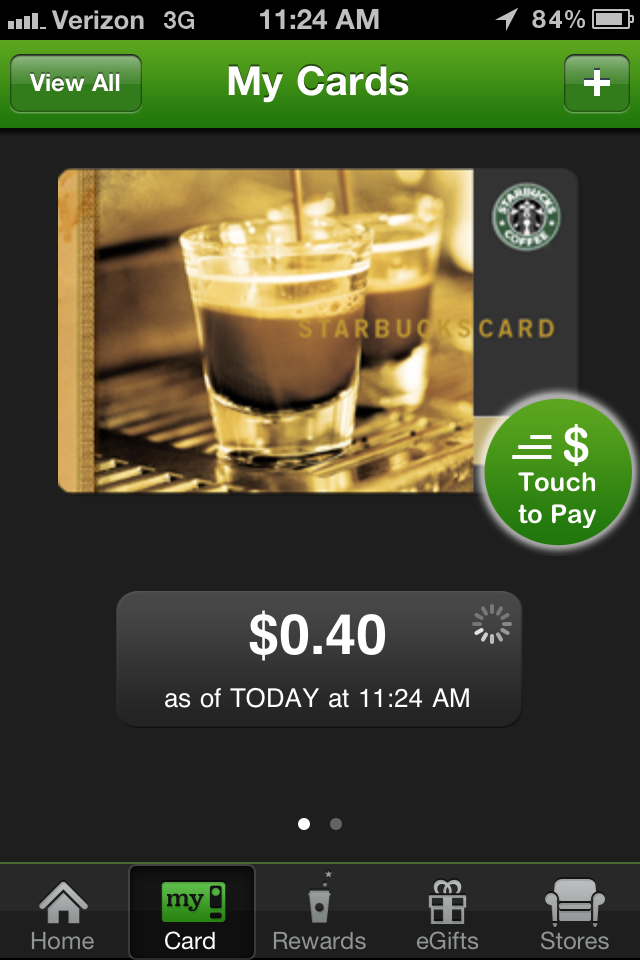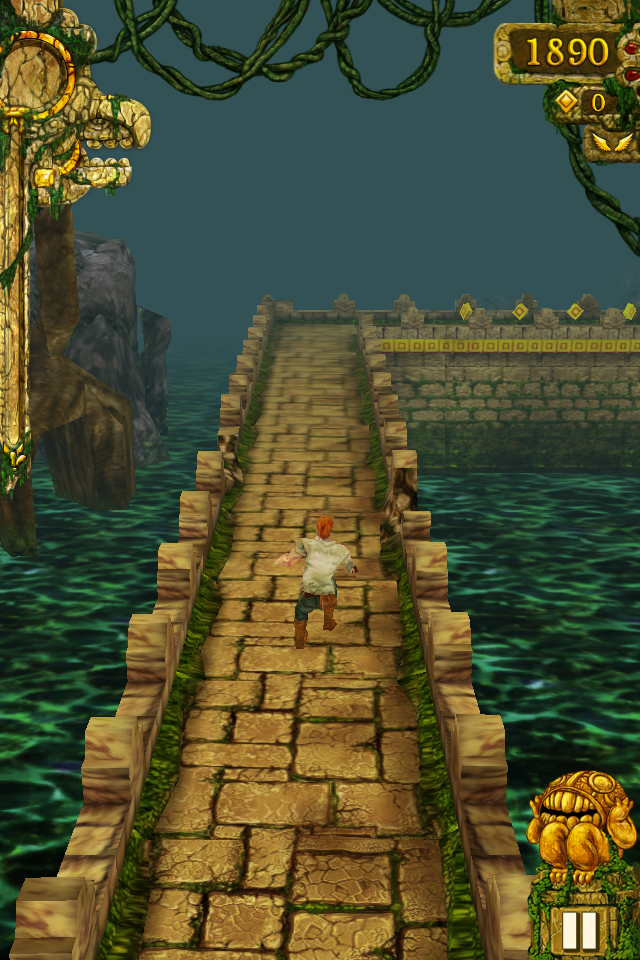Sharing your favorites seems to be the hip thing to do, so I thought I’d share my absolute favorite apps on both my iPhone and iPad (not including any default iOS apps). These are basically the apps I use all the time, and really enjoy using. There’s also quite a few apps I use daily, but might not like as much, as well as apps I think are amazing, but only use on a very infrequent basis. And there are also apps I don’t much like and rarely use, but I didn’t really see the point in including those…
One other note – I picked apps from all categories, including games, social, etc. Also, I didn’t deliberately pick 10, it just worked out that way. First up – iPhone fave’s (in no particular order, btw).
Chef’s Feed is a fun app for foodies (wannabe foodies as well). The app has a list of the “top” chefs of a city, and said chefs have picked their favorite dishes (not restaurants) to eat. The app lets you make a bucket list of dishes that appeal to you, and also is a handy way to find a good bite when you aren’t sure what to eat. Free app.
It’s like Scrabble, only more “balanced” so players at many levels can really enjoy the game. Vocabulary and knowledge of “Scrabble words” is very helpful, and tile placement strategy is essential to win, but regardless, it’s possibly the best non real-time game time waster app out there. Free and paid versions.
It’s a good photo taker, but more importantly it’s a fun photo editor/filter. Simple effects, easy cropping, and simple sharing (though I wish they’d just let me send images instead of creating a whole new link/web system). Paid app.
Simply put: Test Flight lets app developers send you their apps prior to putting them in the iTunes App store. It’s great for previewing or testing out apps in development. If you are an app developer and are not using Test Flight, you should start now. Free to consumers, paid by developers.
GrubHub is an app that replaces all the crappy little delivery menus restaurants leave on your door (though hey, free rubber band). They have tons of local restaurants, plus in-app ordering, and, as pictured above, an order history which makes it super convenient to remember where you liked (or hated) to eat. Free app.
Yeah, I know, cliche, whatever. You prefer Blue Bottle, great, so do I, but $12 for a latte that takes 45 minutes to make doesn’t always work out for me. The Starbucks app does one main thing: let me not have to carry my Starbucks card around. Nice. Free app.
Guess what this app does? Free.
After Words, Temple Run is the next best time-killer game I know. Basically, you run, and run, and run, and then run a bit more. You jump, duck, pivot, and you turn yourself around, and that’s what it’s all about. Free.
Free personalized radio on your iPhone. Any questions? Nah, I didn’t think so. Great for road trips. Free.
Gosh I love Zite. Zite brings me articles I want, on topics I like, and does so with sickeningly good accuracy. While Twitter (and vis-a-vis Flipboard, Pulse, etc) are great for bringing me feeds on a variety of topics, the one thing these apps fail to deliver for me is topical content based on my interests, not my followers or those I am following. I open Zite, I find content I like. Life is good. Oh, and – free.
That’s my list of favorite iPhone apps, hope you enjoy. Here’s the quick list of “runners up”:
- Plants vs Zombies – it’s fairly new to me, I’m having fun playing but I’m not sure how long it’ll hold my interest. Could be a winner, not sure yet. Paid.
- WhiteNoise – self explanatory. Free and paid versions.
- Flixter – movie lookups (solid app, just don’t get to see many movies). Free.
- IMDB – satisfies inner movie nerd needs. Free.
- Path – just started experimenting. Beautiful app design. Does all that Facebook stuff, only without the massive invasion of privacy. Also, just for your real-world friends (you remember those, right?). Free.
- Twitter – read description of Path above. Now think the opposite of it. Free.
- Yelp – great to look up restaurants I already am thinking of going to. Not useful as a restaurant recommendation/finder app. Free.
- CardMunch – take picture of business card, scans it, sends to the Internet, comes back as LinkedIn contact. Previous version of app was notably better than current, but still works great. Free.
- Expensify – if you do a lot of business expensing, you must have this app. Free.
- Sonos – controls my Sonos. Would be on the must-have list, but I know not everyone has a Sonos. Free.
- AppShopper – great app, lets you create a “wishlist” of apps you want, then notifies you when they go on sale. Free.
- iHandy Level – it’s a level. comes in handy. Free.
Anything you think I should check out – leave a comment! iPad version of this list coming soon!
ps – I’d include Dijit, but that’s cheating. 🙂










 Definition: For sake of discussion, I’ll define the First Age of Gadgets as starting with calculators and LCD watches (and, of course, calculator watches). Sticklers will quickly point out something I’m missing, but in my opinion that’s when the concept of “gadgets” really got kicking. These products (1) required batteries and (2) did one thing, typically pretty well. These early gadgets were typically fairly functional in nature, not very gimmicky or showy. They were also workhorses as compared to modern products – you can drop most “old school” products and not fear for significant damage (probably directly related to LED or single-line LCD outputs).
Definition: For sake of discussion, I’ll define the First Age of Gadgets as starting with calculators and LCD watches (and, of course, calculator watches). Sticklers will quickly point out something I’m missing, but in my opinion that’s when the concept of “gadgets” really got kicking. These products (1) required batteries and (2) did one thing, typically pretty well. These early gadgets were typically fairly functional in nature, not very gimmicky or showy. They were also workhorses as compared to modern products – you can drop most “old school” products and not fear for significant damage (probably directly related to LED or single-line LCD outputs). Definition: In a nutshell: USB connectivity and/or card reader integration. Slightly more detailed: the Second Age of gadgets is about products that were able to connect and/or share data with a computer (but did not include WiFi) and/or cell phones. Gadgets started becoming a little more pervasive, a little more mainstream, a lot more pop culture. In addition to the gadgets themselves, the category of gadget accessories really began to boom (chargers, carrying case, rechargeable batteries, etc). This was also the dawn of the gadget blogs. I asked Peter Rojas, founder of Gizmodo, if he could recall why he launched the site: “It was an experiment, something Nick and I started almost by accident. I don’t think either of us thought blogging would become as big as it did. People are a LOT more interested in gadgets now than when I started Gizmodo in 2002 – it’s become part of pop culture.”
Definition: In a nutshell: USB connectivity and/or card reader integration. Slightly more detailed: the Second Age of gadgets is about products that were able to connect and/or share data with a computer (but did not include WiFi) and/or cell phones. Gadgets started becoming a little more pervasive, a little more mainstream, a lot more pop culture. In addition to the gadgets themselves, the category of gadget accessories really began to boom (chargers, carrying case, rechargeable batteries, etc). This was also the dawn of the gadget blogs. I asked Peter Rojas, founder of Gizmodo, if he could recall why he launched the site: “It was an experiment, something Nick and I started almost by accident. I don’t think either of us thought blogging would become as big as it did. People are a LOT more interested in gadgets now than when I started Gizmodo in 2002 – it’s become part of pop culture.” Definition: Internet access and connectivity. Devices had either built-in Internet access, or some hybrid method of interacting with the Internet to share content, data, or services. In many cases Third Age devices are simple evolutions to their predecessors, but some innovated distinctly enough so that there’s no blurry lines. Just as the
Definition: Internet access and connectivity. Devices had either built-in Internet access, or some hybrid method of interacting with the Internet to share content, data, or services. In many cases Third Age devices are simple evolutions to their predecessors, but some innovated distinctly enough so that there’s no blurry lines. Just as the  Displays: I assume we’ll be seeing flexible display surfaces (folding, roll-up, etc) that change the way we physically interact with a device. The concept of a hard, flat screen (even a touchable one) seems very outdated to me. I think the real revolutionary tablet will be the first one with some form of flexible display (and my money’s on Apple for making this happen). I also foresee better use of microprojectors to remove the need for an on-board display at all.
Displays: I assume we’ll be seeing flexible display surfaces (folding, roll-up, etc) that change the way we physically interact with a device. The concept of a hard, flat screen (even a touchable one) seems very outdated to me. I think the real revolutionary tablet will be the first one with some form of flexible display (and my money’s on Apple for making this happen). I also foresee better use of microprojectors to remove the need for an on-board display at all. My insufficiently geeky readers probably won’t get the 42 reference, so I’ll assume you read
My insufficiently geeky readers probably won’t get the 42 reference, so I’ll assume you read  Click “ratings” to rapidly Like, Dislike, or Not hear a song for a month. Perfectly logical, works just like Pandora on the Web does. This feature is one of the key parts to how Pandora works – while you can’t specifically pick songs to play, the collaborative filtering system (recommendations) works extremely well.
Click “ratings” to rapidly Like, Dislike, or Not hear a song for a month. Perfectly logical, works just like Pandora on the Web does. This feature is one of the key parts to how Pandora works – while you can’t specifically pick songs to play, the collaborative filtering system (recommendations) works extremely well.